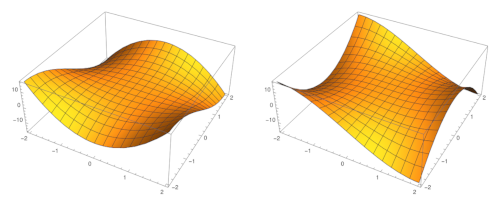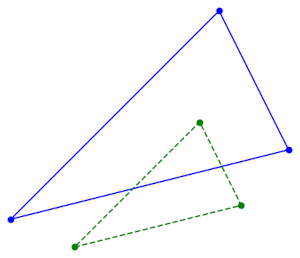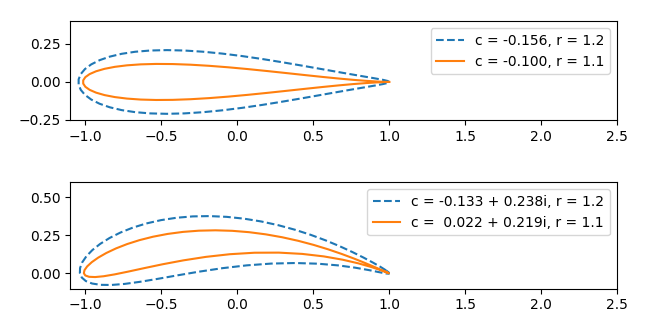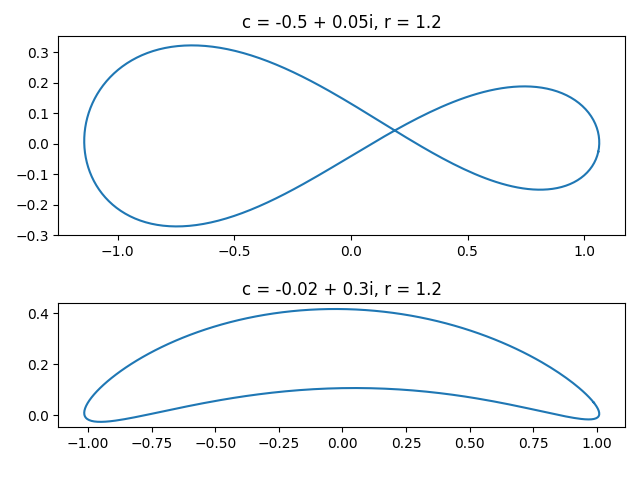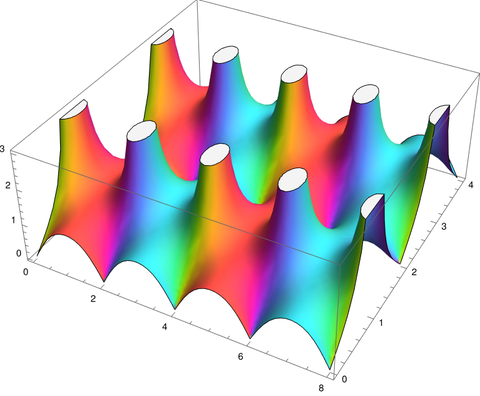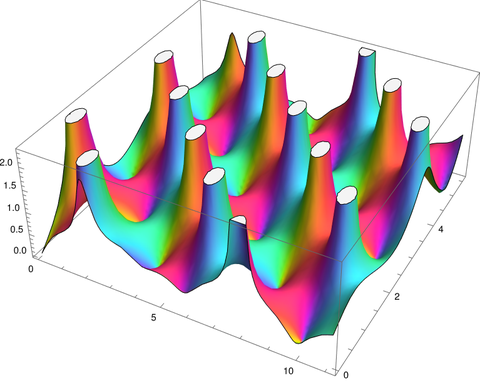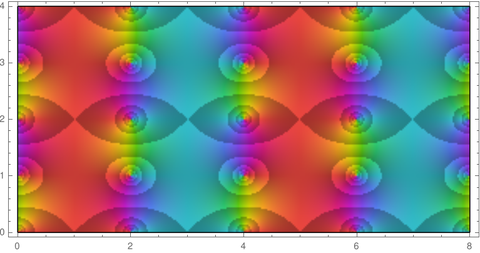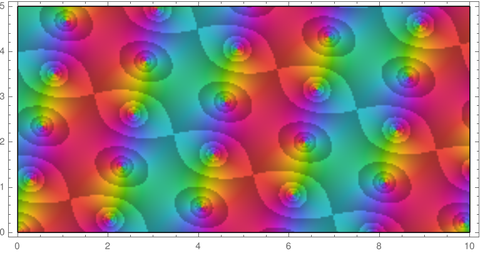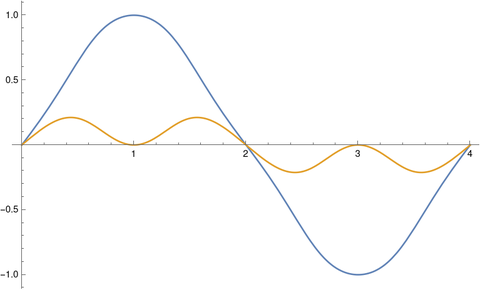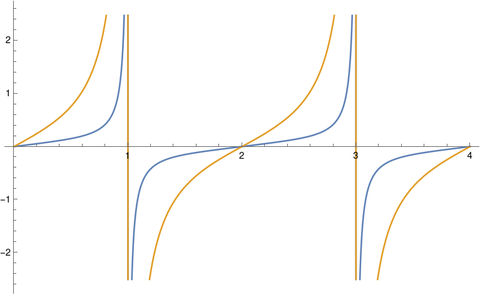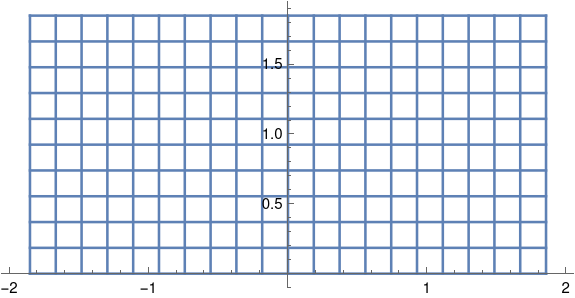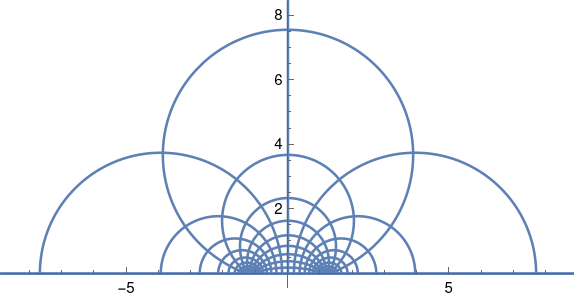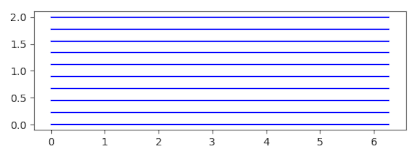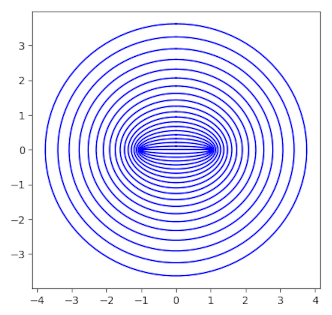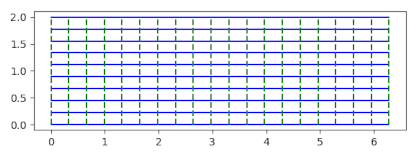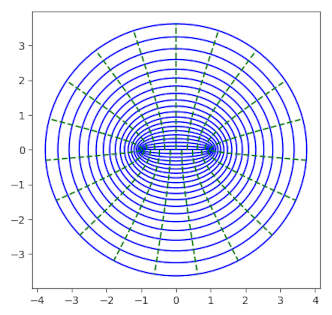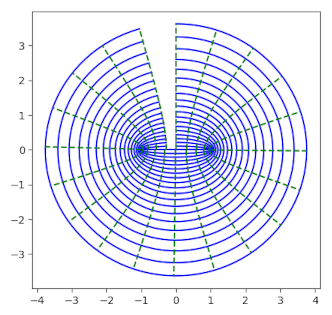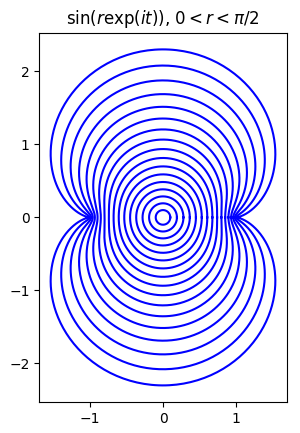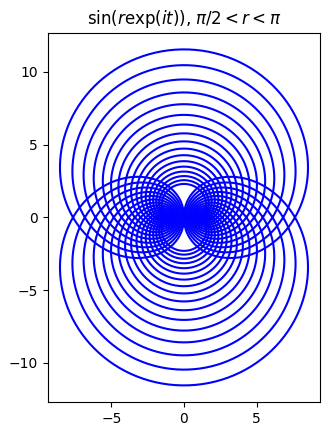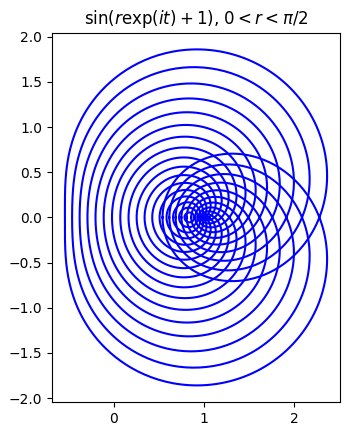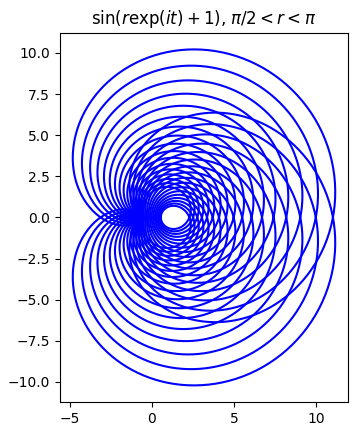Warm up
The geometric mean of two numbers is the square root of their product. For example, the geometric mean of 9 and 25 is 15.
More generally, the geometric mean of a set of n numbers is the nth root of their product.
Alternatively, the geometric mean of a set of n numbers the exponential of their average logarithm.
The advantage of the alternative definition is that it extends to integrals. The geometric mean of a function over a set is the exponential of the average value of its logarithm. And the average of a function over a set is its integral over that set divided by the measure of the set.
Mahler measure
The Mahler measure of a polynomial is the geometric mean over the unit circle of the absolute value of the polynomial.
The Mahler measure equals the product of the absolute values of the leading coefficient and roots outside the unit circle. That is, if
then
Example
Let p(z) = 7(z − 2)(z − 3)(z + 1/2). Based on the leading coefficient and the roots, we would expect M(p) to be 42. The following Mathematica code shows this is indeed true by returning 42.
z = Exp[2 Pi I theta]
Exp[Integrate[Log[7 (z - 2) (z - 3) (z + 1/2)], {theta, 0, 1}]]
Multiplication and heights
Mahler measure is multiplicative: for any two polynomials p and q, the measure of their product is the product of their measures.
A few days ago I wrote about height functions for rational numbers. Mahler measure is a height function for polynomials, and there are theorems bounding Mahler measure by other height functions, such as the sum or maximum of the absolute values of the coefficients.

